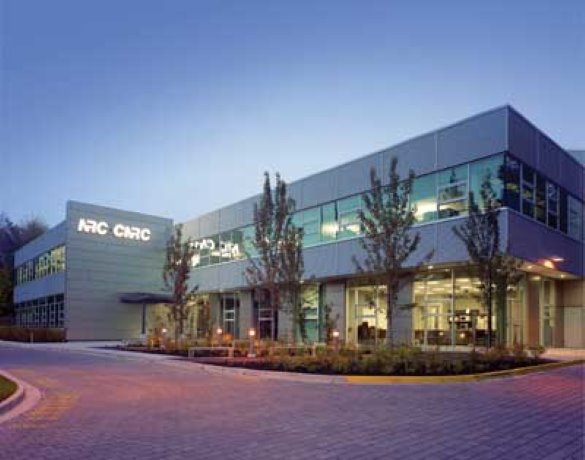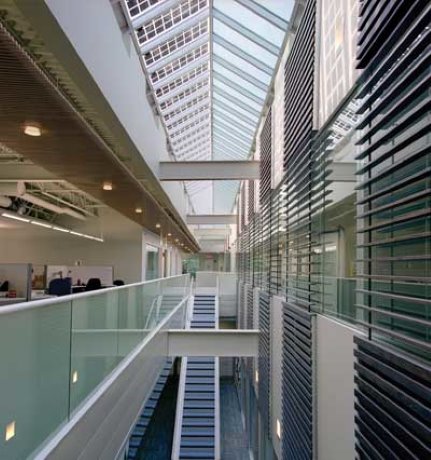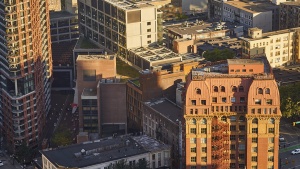The National Research Council facility, designed by Bunting Coady Architects, has earned LEED Gold status, thanks to innovations such as fuel-cell technology.
Use of innovative fuel-cell technologies helped propel a National Research Council (NRC) facility in Vancouver to LEED Gold status.
Designed by Bunting Coady Architects, the $20 million fuel cell research project incorporates a 5-kilowatt solid oxide fuel cell system powered by natural gas. This technology was developed by the NRC fuel-cell researchers.
The full suite of technologies includes a ground-source heat pump to provide natural-source heating and cooling as well as a photovoltaic array to capture energy from sunlight.
This array consists of 93 panels installed in three skylight areas.
“This cutting-edge facility works in harmony with nature and provides a sustainable and comfortable working environment,” says Teresa Coady, chief executive officer at Bunting Coady Architects and principal in charge of design.
The 71,000-square-foot facility, which houses the NRC’s Institute for Fuel Cell Innovation, is located on the University of British Columbia campus.
Construction was completed late in 2006 by Westpro Constructors.
From conception, the design team worked towards LEED certification.
It utilized an integrated design process to incorporate the mechanical, electrical, civil and architectural requirements for the project.
The project team included structural engineers Read Jones Christoffersen, mechanical-electrical engineers Stantec, civil engineers Aplin & Martin Consultants Ltd., landscape architects Phillips Farevaag Smallenberg, energy consultants G.F. Shymko & Associates Inc. and commissioning consultants CES Engineering.
In a release, Bunting Coady said additional features that contributed to achieving LEED Gold status include:
•Careful site selection, which avoided sensitive land types (farmlands, wetlands, habitat and parkland). The open space surrounding the building is larger than the building footprint. NRC has guaranteed its conservation for the lifetime of the building.
•Innovative design techniques that minimize light pollution and ensure zero light encroachment to adjacent properties and the surrounding atmosphere. Onsite lighting systems monitor both daylight levels and occupancy use.
•Stringent indoor air standards. Air systems are protected by gateway grills, designed to capture dirt and particulates.
The chemical rooms have dedicated exhaust systems. Carbon dioxide monitoring systems have been incorporated throughout the building.
•Use of locally produced materials. Sixty-one per cent of all materials used in the construction of the facility were produced locally, reducing transportation costs and greenhouse gas emissions. In addition, only non or low VOC (volatile organic compound) emitting interior adhesives, sealants, paints and carpets were specified.
•Introduction of drought-tolerant native plants, which helped enhance both building performance and site ecosystems. No permanent irrigation system is required for the site.
In addition, alternative transportation options are promoted through easy access to public transportation and provision of bicycle storage stalls and shower facilities.
The project was awarded LEED Gold by the United States Green Building Council.
A Bunting Coady spokesperson said the building was registered in December 2003, prior to implementation of the green building rating system in Canada.

Skylights with photovoltaic panels.











Recent Comments
comments for this post are closed